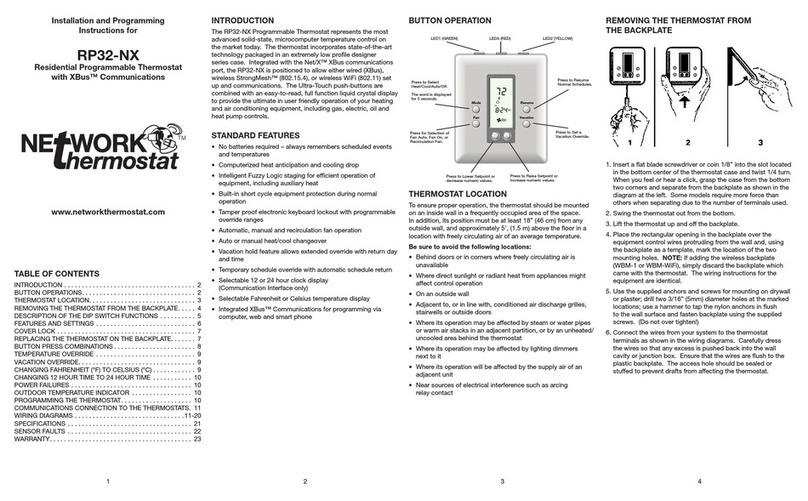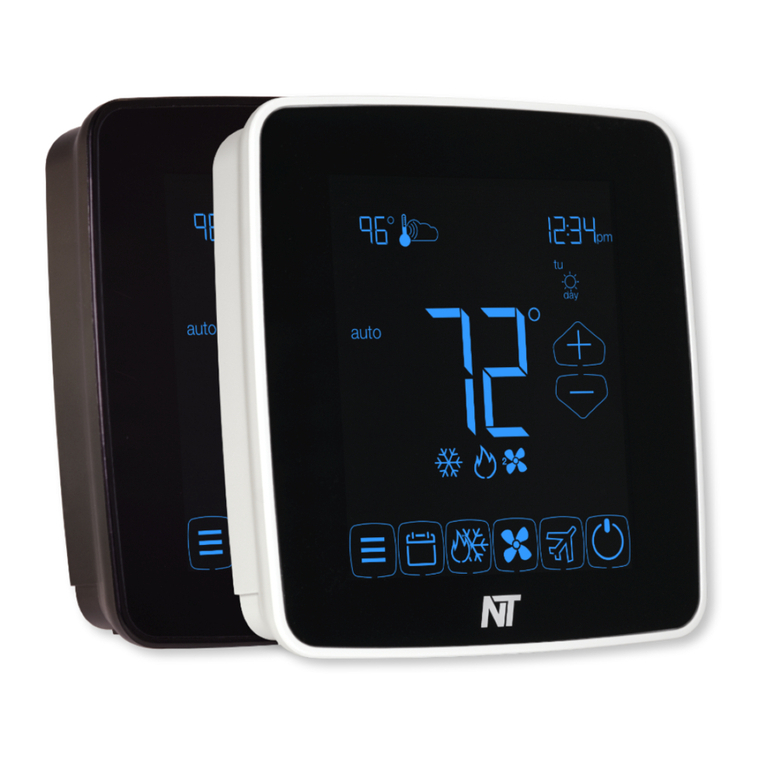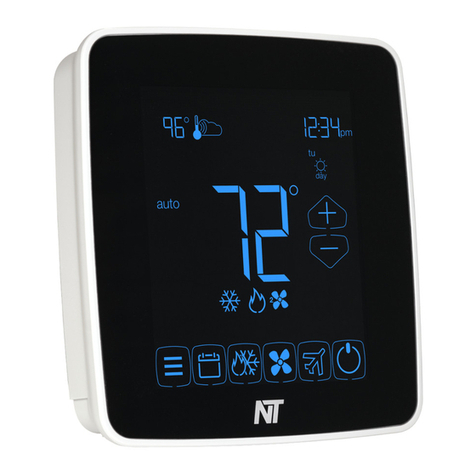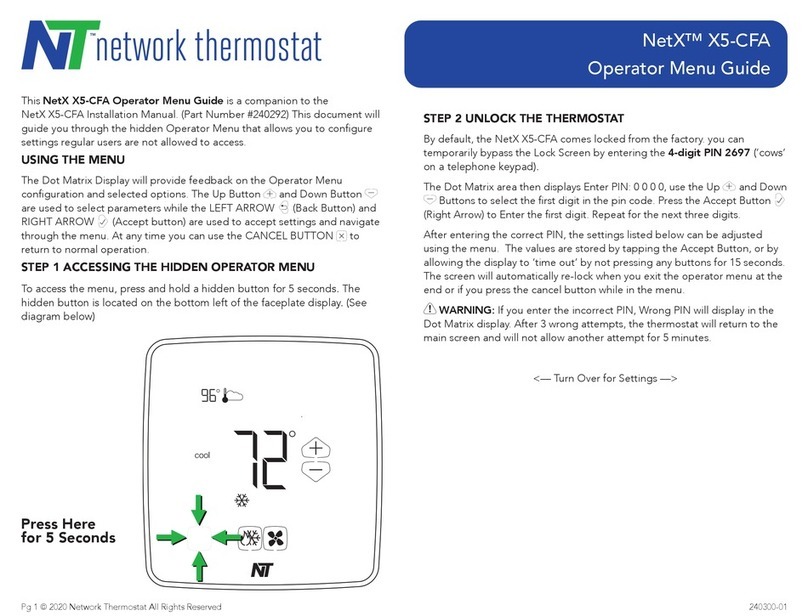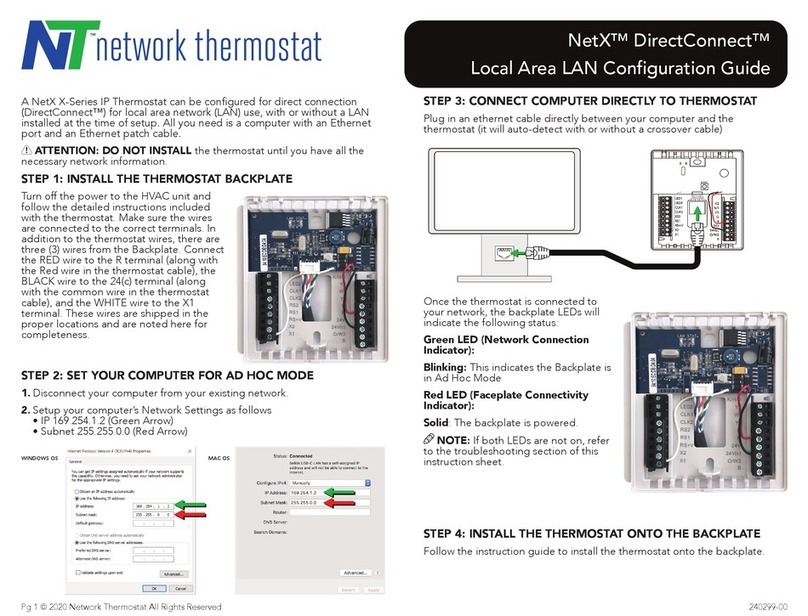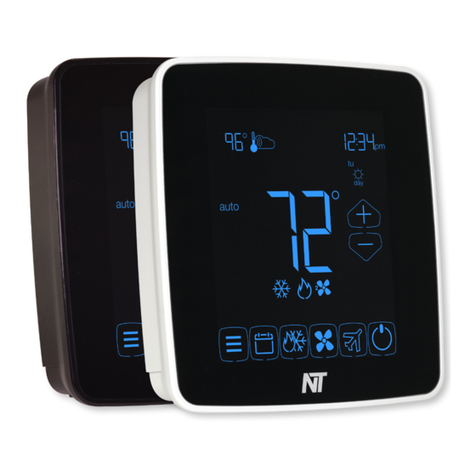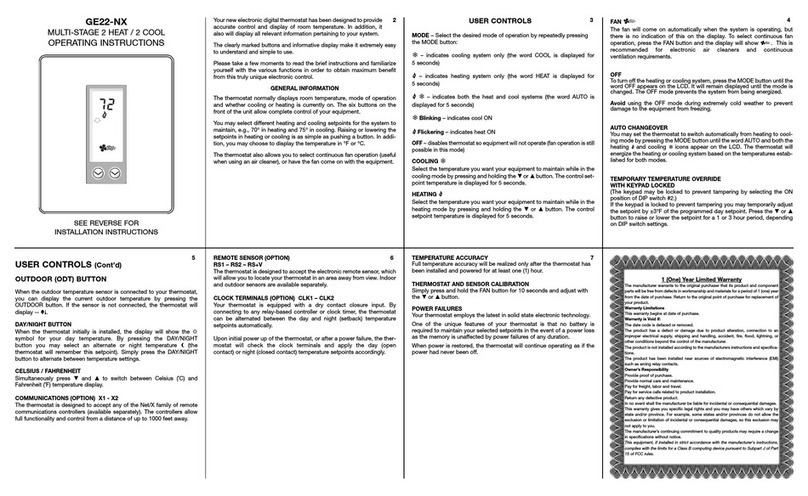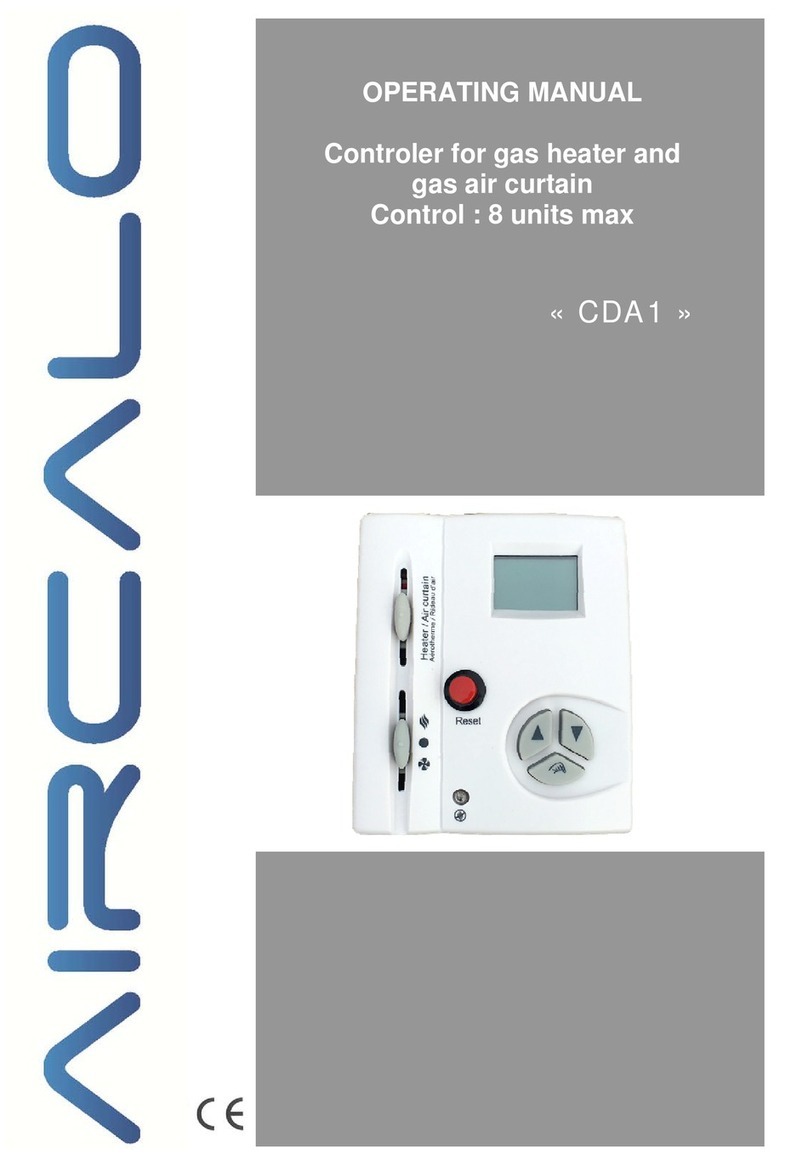2TEC-N2 Series Thermostat
Table 1: Specifications
Product HP32-N2 Thermostat with N2 Bus, 3 Heat/2 Cool Heat Pump
GE22-N2 Thermostat with N2 Bus, 2 Heat/2 Cool
Compatibility GE22-N2 TEC1101-1 (Johnson Controls)
TEC1103-1 (Johnson Controls)
HP32-N2 TEC1102-1 (Johnson Controls)
Power Requirements 20-30 VAC, 50-60 Hz, Class 2, 24 VAC nominal, 2.4 VA maximum not including
driven loads
Relay Contact Rating Maximum Inductive: 1 ampere with surges to 3 amperes, 24 VAC Class 2
Maximum Resistive: 1 ampere, 24 VDC (2000 VA maximum for all outputs)
Minimum: 10 mA for 24 VAC circuit; 10 mA for a 24 VDC circuit
Binary Inputs 20-30 VAC or 22-30 VDC (Negative on 24V [C] terminal). Switches at 2 VDC.
(LED 1, LED 2, CLK1)
Recommended Wire Size 18 gauge at 100 feet/22 gauge at 20 feet
Thermostat 28° to 124°F (0° to 48°C)
Measurement Range
Outdoor Air -50° to 124°F (-48° to 48°C)
Temperature Indication
Range
Control Range Heating: 38° to 88°F in 1° increments (5° to 30°C in 1° increments)
Cooling: 60° to 88°F in 1° increments 16° to 40°C in 1° increments)
Display Resolution 1°F (1°C)
Minimum Deadband 1°F (2°C) between heating and cooling
°C/°F Conversion 20°C = 68°F, each Celsius degree above or below 20°C is 2°F
N2 Communications Isolated bi-directional, RS-485, 9600 baud
Ambient Operating 32° to 131°F (0° to 55°C); 5% to 90% RH noncondensing
Conditions
Ambient Storage -30° to 131°F (-34° to 55°C)
Temperatures
Dimensions (H x W x D) 4-1/2 x 4 x 7/8 in. (114.3 x 101.6 x 22.2 mm)
Shipping Weight 0.37 lb (0.171 kg)
UL and cUL Listing UL 873 Multiple Class 2 Device, UL94HB Plastic Enclosure
CE Compliance CISPR 22, Residential Class B, CE Directive (89/336/EEC, EN50081/1,
EN50082/2) Industrial and Residential
FCC Compliance This equipment has been tested and found to comply with the limits for a Class
A digital device and verified to Class B pursuant to Part 15 of FCC Rules. These
limits are designed to provide reasonable protection against harmful interference
when this equipment is operated in a commercial environment. This equipment
generates, uses, and can radiate radio frequency energy and, if not installed and
used in accordance with the instruction manual, may cause harmful interference
to radio communications. Operation of this equipment in a residential area is
likely to cause harmful interference in which case the user will be required to
correct the interference at his/her own expense.
This device complies with Class A Part 15 of the FCC rules. It was also verified to Class B. Operation is subject to the following two conditions:
(1) This device may not cause harmful interference.
(2) This device must accept any interference received, including interference that may cause undesired operation.
This Class A digital apparatus meets all of the requirements of the Canadian Interference-Causing Equipment Regulations. Cet appareil numerique de
la classe A respecte toutes les exigences du Reglement sur le materiel brouilleur du Canada.
